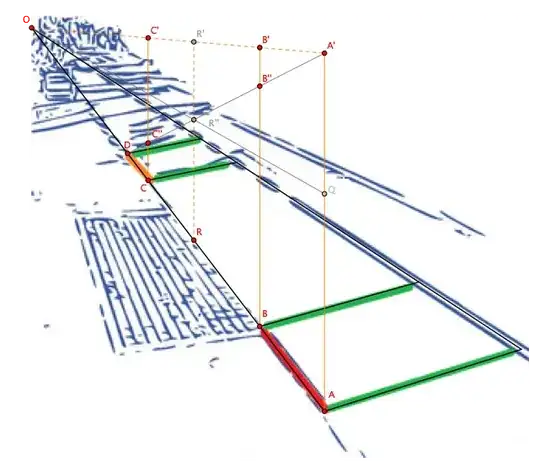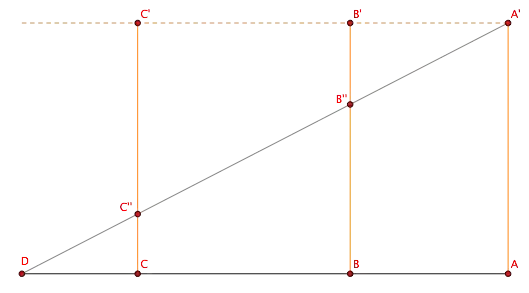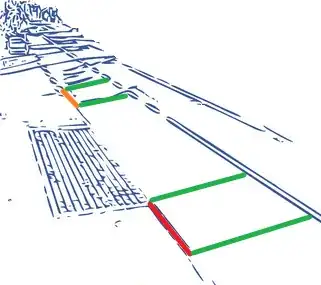I'm showing below a geometrical way to find what you want. Let $A$, $B$, $C$, $D$ be the endpoints of red and orange line segments in your picture, and let $O$ be the vanishing point where line $ABCD$ intersects the other side of the road.

Draw from $A$, $B$, $C$ three parallel lines and choose on them points $A'$, $B'$, $C'$, aligned with $O$. Join $A'D$ and let $B''$, $C''$ be the points where line $A'D$ intersects $BB'$ and $CC'$. You can see in the diagram below how these lines would appear in reality. Notice that lines $AA'$, $BB'$ and $CC'$ are parallel between them and to the view plane: that implies that all ratios of segments belonging to the same line have the same value both in reality and in the picture.

By similar triangles it is then easy to find the following relation among real lengths:
$$
{AB\over CD}\cdot{CC''\over CC'}=1-{BB''\over BB'}.
$$
But ${CC''\over CC'}$ and $BB''\over BB'$ can also be measured from the picture, so you can find that $AB/CD\approx 0.53$ and $AB$ is then slightly more than 1 meter.
To find a point $R$ on $ABCD$ such that $AR/CD$ has a given value, you can rewrite the above relation as
$$
{RR''\over RR'}=1-{AR\over CD}\cdot{CC''\over CC'}
$$
and notice that if $Q$ is the intersection between line $OR$ and $AA'$, then ${RR''\over RR'}={AQ\over AA'}$.
You can then construct point $Q$ on $AA'$ such that
${AQ\over AA'}=1-{AR\over CD}\cdot{CC''\over CC'}$ and find $R''$ as the intersection between $QO$ and $A'D$. From that it is easy to find point $R$: in the above picture, point $R$ was constructed so that $AR/CD=3/2$, as you required.


